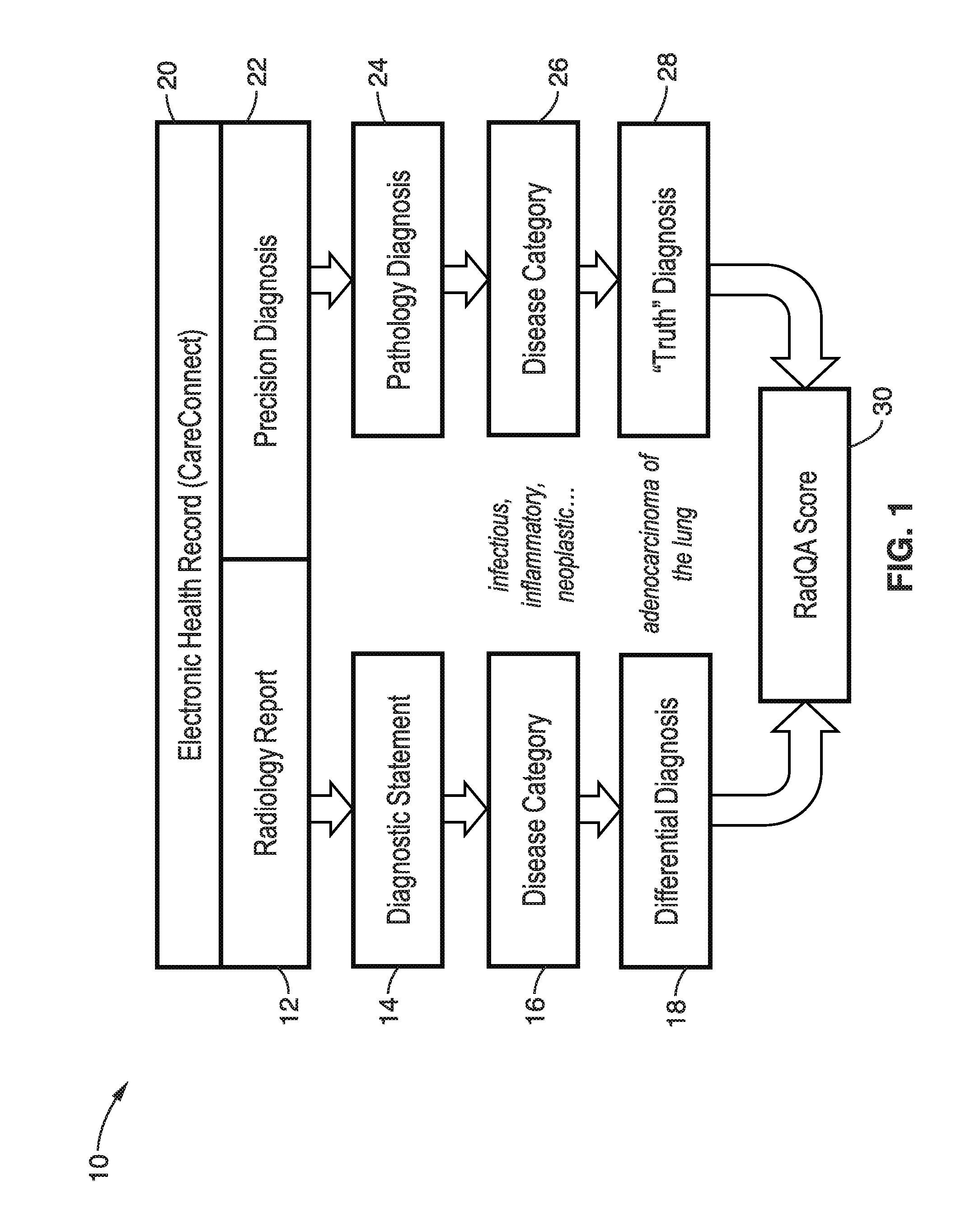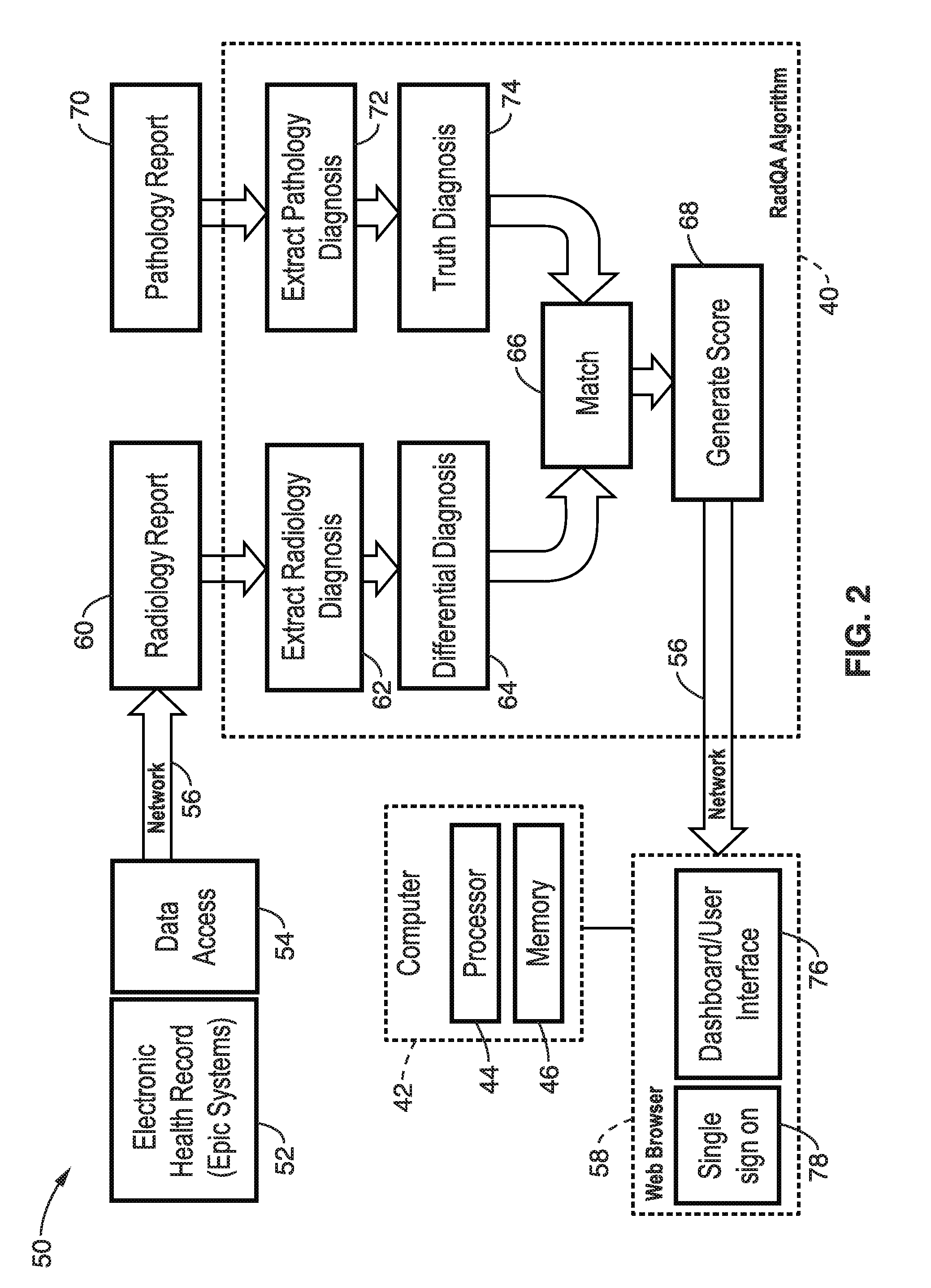Automated quality control of diagnostic radiology
a radiology and quality control technology, applied in the field of medical diagnostic quality assessment, can solve the problems of loss of productivity, 4% of radiological interpretations reported during daily practice, and limited assessment to the information availabl
- Summary
- Abstract
- Description
- Claims
- Application Information
AI Technical Summary
Benefits of technology
Problems solved by technology
Method used
Image
Examples
Embodiment Construction
[0032]The system and methods detailed below objectively assess diagnostic accuracy based on comparison with findings from other clinical sources such as pathology (“precision diagnosis”) rather than an interpretation rendered by peers.
[0033]The system detailed below is particularly directed to evaluation of the concordance between breast biopsy recommendations reported using Breast Imaging-Reporting and Data System (BI-RADS) and actual pathological diagnosis from those individuals who undergo a biopsy. The system integrates real-time data from clinical systems as inputs to automatically generate a dashboard that reports information about the concordance rates between as-signed BIRADS scores and pathology assessments. The system routinely retrieves radiology exam information for breast imaging such as modality, exam and interpretation dates, signing radiologist, BIRADS assessment, and full-text report. For the same patients, the system also retrieves information from the pathology la...
PUM
 Login to View More
Login to View More Abstract
Description
Claims
Application Information
 Login to View More
Login to View More - R&D
- Intellectual Property
- Life Sciences
- Materials
- Tech Scout
- Unparalleled Data Quality
- Higher Quality Content
- 60% Fewer Hallucinations
Browse by: Latest US Patents, China's latest patents, Technical Efficacy Thesaurus, Application Domain, Technology Topic, Popular Technical Reports.
© 2025 PatSnap. All rights reserved.Legal|Privacy policy|Modern Slavery Act Transparency Statement|Sitemap|About US| Contact US: help@patsnap.com



